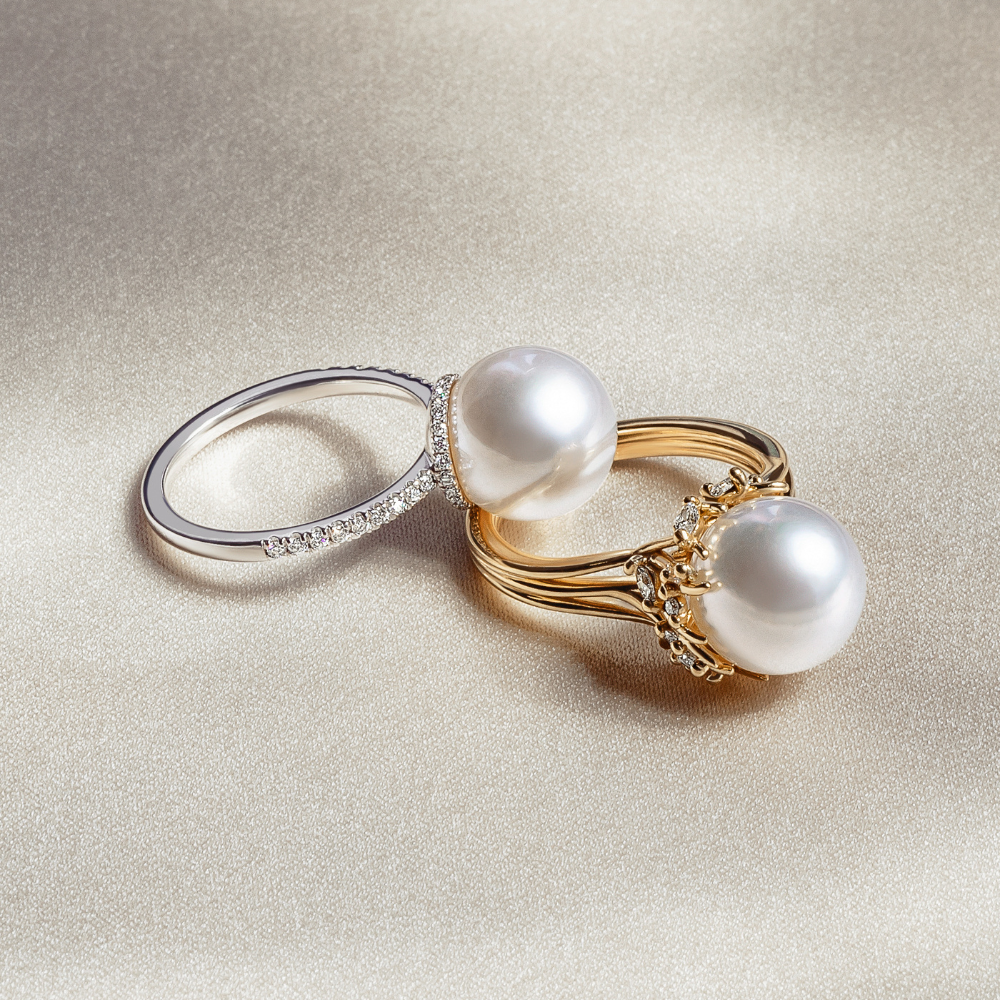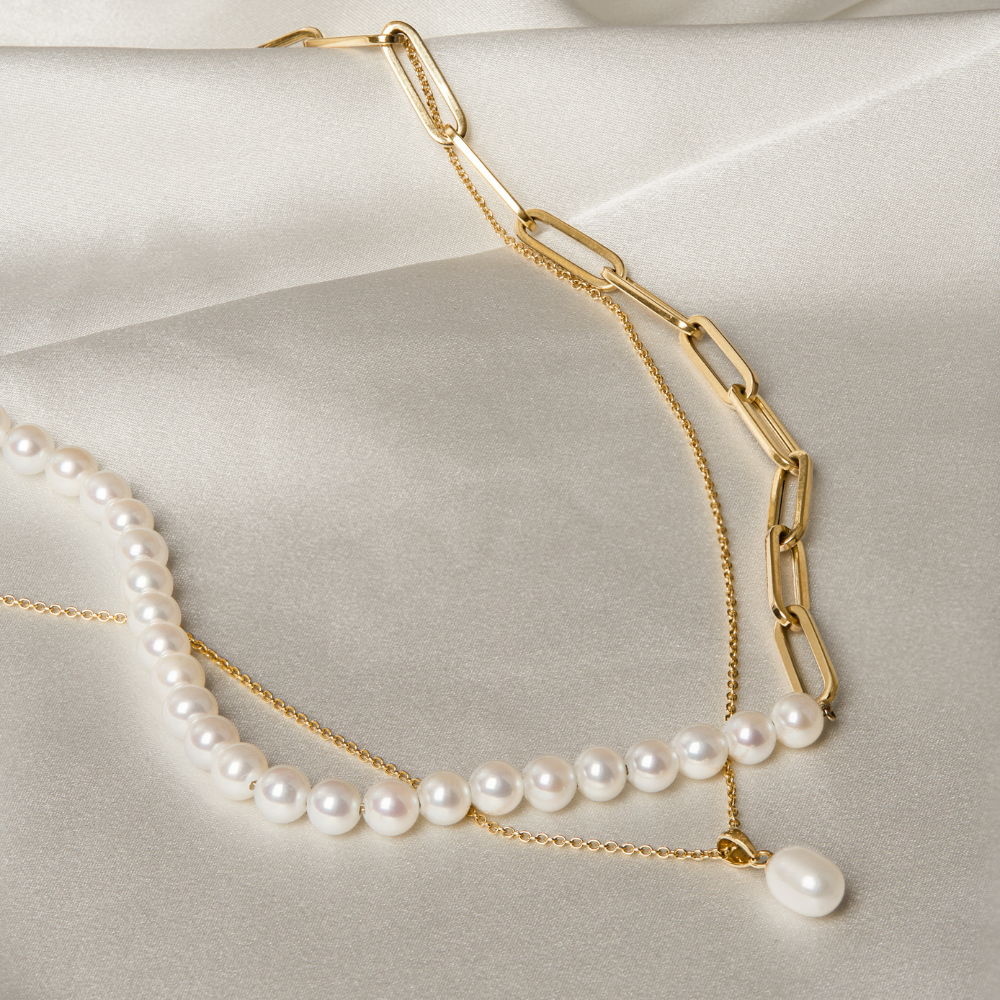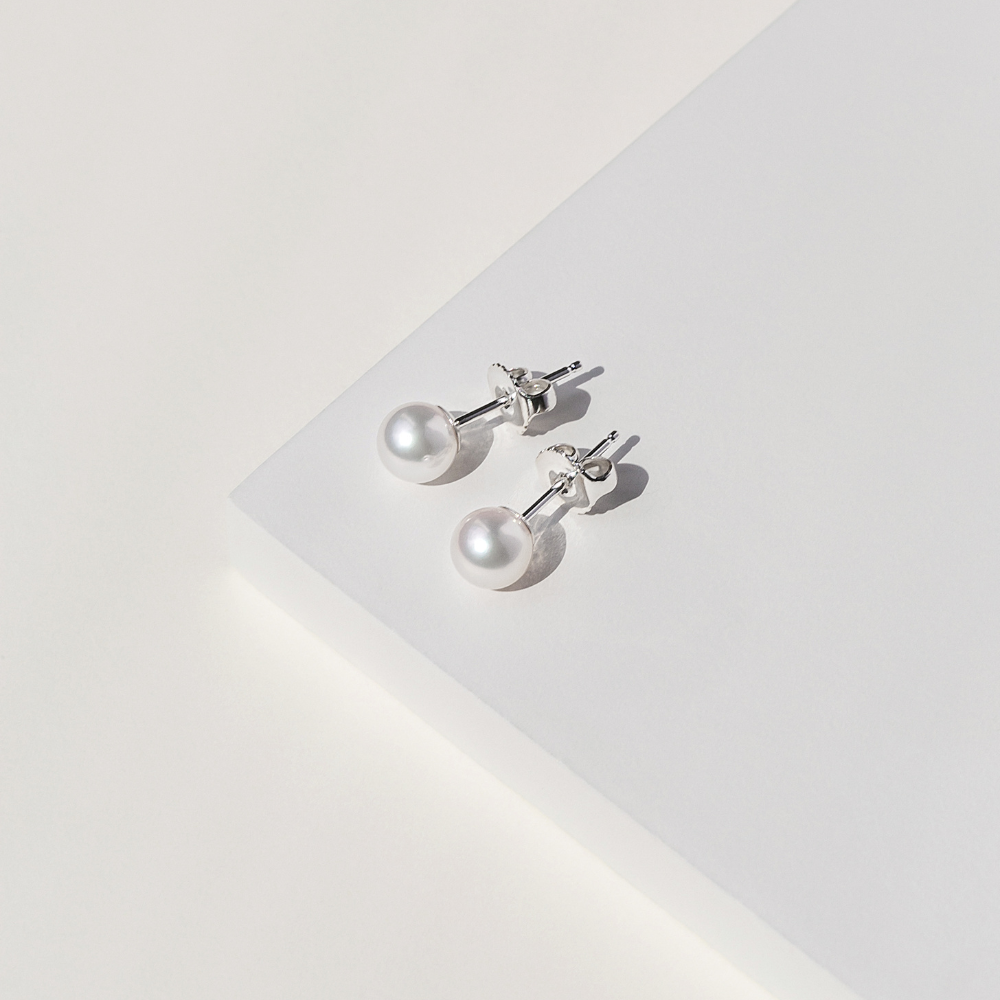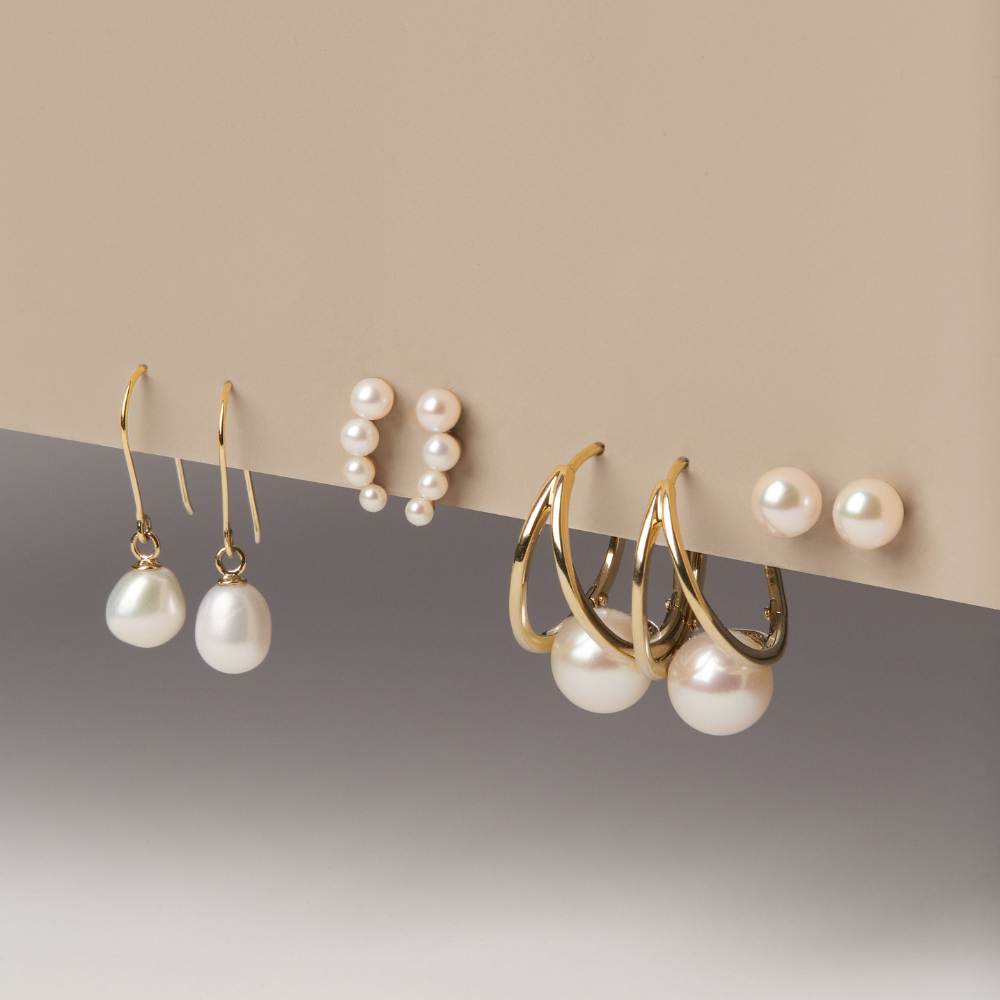
A cultured pearl is a type of pearl that is created through human intervention in a controlled environment. Read on to learn more about what cultured pearls are, their value, and how they compare to natural pearls.
Cultured Pearls Meaning
Unlike natural pearls, which form spontaneously in the wild, cultured pearls are the result of a delicate process where an irritant, like a grain of sand, is intentionally slipped into an oyster or mollusk. This stimulates the production of nacre, the substance that forms a pearl. Cultured pearls can be produced in saltwater or freshwater environments, with variations in size, color, and quality depending on the species of mollusk and conditions of cultivation.
Learn more about pearls in our Pearl Guide and Pearl Color Guide.

Are cultured pearls real?
Yes, cultured pearls are real pearls—they are composed of the same materials as natural pearls. The main difference between cultured and natural pearls lies in their formation process. While natural pearls form without human intervention, cultured pearls are initiated by human action. Despite this, cultured pearls are not an imitation or synthetic; they are genuine gems created by living organisms under carefully managed conditions. Most pearls currently on the market are cultured, as natural pearls are exceedingly rare.
Cultured Pearls Value
The value of cultured pearls can vary widely based on several factors, including size, shape, luster, surface quality, nacre, and color. Generally, larger pearls with a symmetrical shape, high luster, and minimal surface imperfections are considered more valuable. The type of mollusk and the cultivation method also play a role in determining value.

How to Clean Cultured Pearls
Proper care and cleaning of cultured pearls is essential. They are delicate and can be damaged by harsh chemicals, abrasive materials, and excessive moisture. To clean cultured pearls, follow these steps:
- After wearing, gently wipe the pearls with a soft, damp cloth to remove any oils or residues from skin contact.
- For a deeper clean, use a mild soap solution (avoid detergents with ammonia or harsh chemicals). Dampen a soft cloth with the solution and gently wipe the pearls.
- Rinse the pearls with a cloth dampened in clean water to remove any soap residue.
- Lay the pearls flat on a soft towel to air dry completely before storing them.
- Store pearls in a soft, separate pouch or compartment away from other jewelry to prevent scratching.
Regular maintenance includes avoiding direct exposure to perfumes, hairsprays, and cosmetics, which can damage the nacre over time.

Cultured Pearls vs. Natural Pearls
Cultured pearls and natural pearls differ primarily in their formation process. Natural pearls form without any human intervention, usually as a defense mechanism against an irritant inside a mollusk. These pearls are almost nonexistent today, and often come with irregular shapes and varied sizes due to the uncontrolled environment in which they develop.
Cultured pearls, on the other hand, are formed by deliberately introducing an irritant into the mollusk. This controlled process allows for more predictability in terms of pearl shape, size, and quality. Cultured pearls can be produced in larger quantities, making them more accessible and affordable than their natural counterparts. Despite these differences, both types of pearls are real and valuable.





